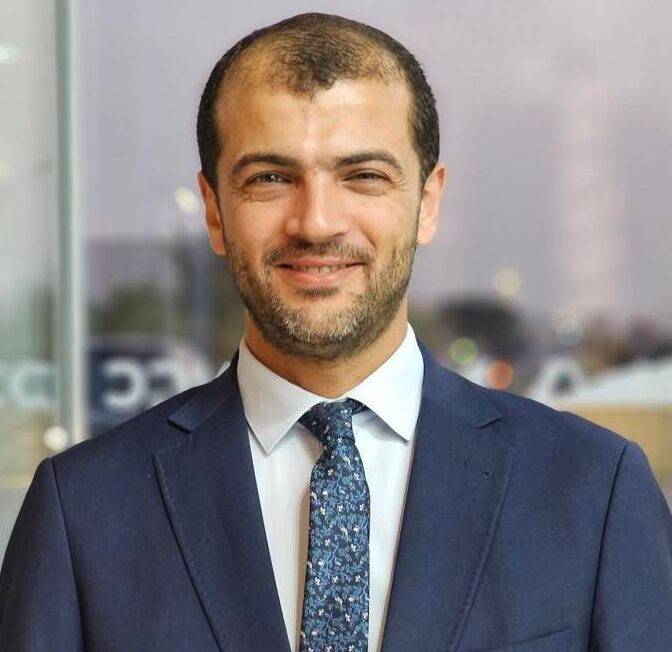Al-Aqsa Mosque, in the heart of the holy city of Jerusalem, is 1,300 years old – built in the 7th century. Israeli excavations, invasions and campaigns have, however, threatened the foundations of this symbol of Jerusalem.
But what does Al-Aqsa Mosque have to do with settler campaigns to rebuild the Biblical Temple of Solomon? And how did this idea reach Brazil, helping to extol the symbols that the Zionist State of Israel wants to place in place of millenary Muslim monuments?
The Temple of Solomon in São Paulo was inaugurated in 2014 to the sound of gospel songs and the national anthems of Brazil and Israel. Thus, from the onset it brought together religion and political affinity to Israel, a state that occupies Palestine and is in dispute with it over the sacred city of Jerusalem.
The construction was part of an initiative by Bishop Edir Macedo, pastor and founder of the Universal Church of the Kingdom of God. He dedicated himself to building the church’s headquarters in the format of the temple described in the Bible, which would have been built in the reign of Solomon, between 970 and 930 BC.
Although there is no trace of it in the archaeological discoveries from that period, the respect for the text’s references to the first Jewish temple is something many in the Jewish and Christian faiths hold true as the place where the Ark of the Covenant was kept.
The idea of its reconstruction, however, is not just a religious issue. In Brazil, a country with a Catholic majority, it boasts the growing political and economic support of evangelical pastors who have millions of followers. In Palestine, it has political use in the occupation and Judaisation of Jerusalem.
But was there a Temple of Solomon?
According to the Biblical passage, the temple built about 3,000 years ago stood for more than four centuries until it was destroyed in the year 587 BC by the Babylonians. It would be difficult for there to be no archaeological remains in the region, especially given the size and richness with which the work is described.
Its foundations are said to have been 29 metres long and 10 metres wide. Solomon is said to have used pure gold to cover the inner sanctum of the temple, where he placed a pair of golden cherubs measuring 30 feet in width to guard the Ark of the Covenant. “He also overlaid the house with gold—the beams, the thresholds and its walls and its doors; and he carved cherubim on the walls,” as described in 2 Chronicles 3:7.
In 2015, the Director of the Institute of Archeology at Tel Aviv University, Israel Finkelstein, shattered efforts made by researchers of biblical archaeologies saying that exhaustive excavations have found no sign of major construction or Solomon’s reign in Jerusalem.
Al-Aqsa Mosque: Islamic institutions warn Israel against expansion of Magharbeh Gate
His book, ‘The Bible Unearthed’, says the descriptions are incompatible with the findings.
In his article ‘Deconstructing the Walls of Jericho’ Israeli archaeologist Ze’ev Herzog refers to the Temple of Solomon as a religious legend to express Jewish glory, but which is unrelated to the conditions of the time.
A second Jewish temple, appropriated and enlarged by Herod, and in which Jesus would have expelled the moneychangers, was destroyed in the year 70 of the Christian era. From this construction a wall remained, today called the Al-Buraq Wall and which is considered sacred to Jews.
In almost 2,000 years, following the destruction of the second temple until the 19th century there was no intention to build the Temple of Solomon.
Taking down Al-Aqsa, a political manoeuvre
As Israeli Professor at Tel Aviv University Shlomo Sand, author of ‘The invention of the Jewish people’ writes, it is not possible to use religion as a source of historical law.
But that changed at the turn of the 20th century.
The Zionist movement, founded by the Hungarian journalist Theodor Herzl in 1896, proposed an exclusively Jewish national state on Palestinian lands. For this, the movement turned to religion to claim rights over Palestine and Jerusalem. He even said that Palestine was a land without a people, waiting for a people without a land. A statement which was factually inaccurate. Palestine had, at that time, about 25 inhabitants per square kilometre, when Brazil, for example, had less than four, according to data from 1922 gathered from the Brazilian and British censuses.
At the turn of the century, under the influence of the Zionist movement in Europe, the idea of rebuilding the Temple of Solomon began to be mentioned by Western newspapers.
In 1917, the Balfour Declaration – a letter from the British foreign minister of the time pledging support for a Jewish home in Palestine – paved the way for the colonial imposition of the State of Israel.
In 1948, more than 800,000 Palestinians were expelled during the Nakba, an Arabic word meaning catastrophe and referring to the violent establishment of the State of Israel over Palestinian cities and towns. The Israeli occupation and ethnic cleansing against the Palestinian people continued and the idea of rebuilding the temple started to gain momentum, a model, signatures from visitors and support from politicians.
Advocates of the building claim that the remains of the temple would be beneath the Al-Aqsa Complex and Mosque, built in 705 AD. The proposal to remove the 13-century-old mosque has become an obsession of radical Zionists and extremist settlers.
An arson against Islamic Jerusalem
One of the three Islamic holy sites and the spiritual heart of Palestinian life started to be invaded, attacked and threated.
In 1967, after the war unleashed by Israel to control the rest of historic Palestine, the Zionist regime took military control of all of Jerusalem.
In 1969, Al-Aqsa Mosque was the target of an arson attack started by a Christian Zionist from Australia. When the fire started, the Israeli occupation authorities allowed it to spread. Residents discovered that fire extinguishers did not work and the water supply had been cut off at every mosque. As the fire burned, soldiers blocked the entry of aid arriving from neighbouring cities: from Nablus, Ramallah, Al-Bireh, Bethlehem, Hebron, Jenin and Tulkarm. The fire was initially fought with buckets of water, carried from hand to hand by residents, until the late arrival of the firefighters.
Most countries around the world reported on the fire. The United Nations Security Council passed Resolution 271 of 15 September 1969 deeming the arson a criminal act under Israel’s military occupation, and expressing “the universal outrage caused by the act of sacrilege in one of the most venerated shrines of mankind.” The Council urged ‘the immediate necessity of Israel’s desisting from acting in violation of the aforesaid resolutions and rescinding forthwith all measures and actions taken by it designed to alter the status of Jerusalem.’
Palestinians have denounced repeated violations of Muslim, as well as Christian, symbols as a deliberate attempt to Judaise Jerusalem, with the progressive expulsion of the local population; the Palestinians.
The illegal advance on Jerusalem
The UNESCO World Heritage Committee’s 2016 resolution on the status of the Old City of Jerusalem and its Islamic origin angered Israel, which occupied East Jerusalem in 1967.
In 1980, Israel created a law officially annexing East Jerusalem to its territory. The United Nations and several countries considered the measure illegal.
In 2018, Israel declared itself, through another Basic Law, an exclusively Jewish state, with Jews having privileged rights over non-Jews. The siege, discrimination and crimes against Palestinians have led to accusations of apartheid by notable human rights organisations and proceedings at the International Criminal Court, which are still ongoing.
As time runs out for the criminalisation of Israel, the occupation moves forward to make the Judaisation of Jerusalem a fait accompli. A few countries have moved their embassies in Israel to the city as a sign of support, and others, like Brazil, are under pressure to do the same.
Back in Brazil, the replica of the Temple of Solomon exhibit in the manner laid out by Edir Macedo outlines what a new temple in Jerusalem could be. Deliberately erected on the ruins of the centuries-old Islamic Al-Aqsa Mosque.
PA official warns Israel against ‘Judaisation’ of gate to Al-Aqsa compound
The views expressed in this article belong to the author and do not necessarily reflect the editorial policy of Middle East Monitor.









